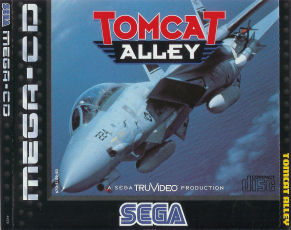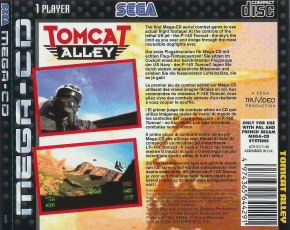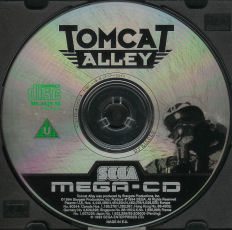|
Tomcat Alley |
||||||||||||||||||
|
"The first Mega-CD aerial combat game to use actual flight footage! At the controls of the lethal US jet - the F-14X Tomcat - the sky's the limit as you soar and doge through the most incredible dogfights ever." |
||||||||||||||||||
|
|
|||||||||||||||||
|
|
|||||||||||||||||
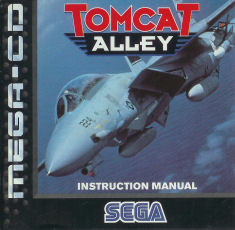 |
|
|
 |
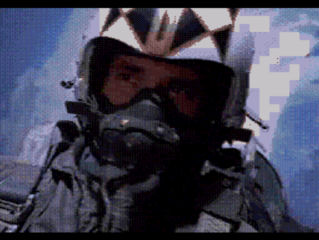 |
|
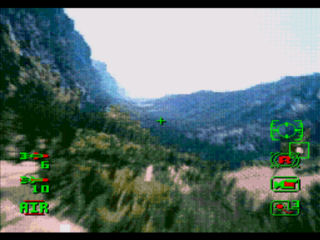 |
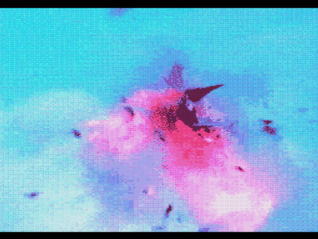 |
|
|
Strap yourself in as weapons
officer in the titular plane and take on an assortment of missions
to rid the world of a Russian madman. Whilst the guy in front
flies the plane pretty much everything else is left up to you, with
all your actions controlled via the Head Up Display (HUD).
Despite the fact that the game is on rails you have to select
waypoints on screen in the same way as enemies, and if you don't do
it within the time limit the pilot (who is steering the thing after
all) nags you to do it faster. The icons for answering radio
calls, taking recon photos and launching chaff are all tucked in the
bottom right, meaning you frequently have to drag the reticule all
the way to one corner of the screen. The HUD display can be
removed by pressing the C button, but as it functions as your
control panel as well as an information display this is totally
pointless and C could (and should) have been used to cycle weapons
rather than having to click icons in the bottom left. Whilst
having everything on screen to select seems like a good idea, this
is really where Tomcat Alley falls down. You have only five
seconds to perform any action, followed by a warning and then
another three seconds should you fail, and the combination of the
movement of your plane, and reticule's own jerky movement and when
you're shooting enemies their jinking, means that accurate targeting
is difficult. Whilst with icons and waypoints you can keep the
reticule in the right area and mash the B button to get the desired
result, fire fights are very difficult and if you miss too many it's
game over whether you survive or not - and with only 9 chaff charges
you can expend your entire supply if you keep missing a single MiG. The FMV is reasonably sharp, as a lot of the in-flight footage has the sky as a backdrop most of the Mega-CDs limited palette can be used to render the actors rather than a pretty background. It all moves smoothly and fills most of the screen but does use the familiar trick of a second or two of stock footage when you launch a missile or select a destination whilst the next bit of FMV is hunted down on the disc. It's also impossible to pick faults with the sound, the voice acting is clear (if a little wooden) and the nature of the game means that the only spot effects are various electronic beeps and blurbles from your HUD. Thankfully the manual gives you a run-through of the first mission, which does branch once depending on whether or not you shoot down the enemy fighter escorts. Like just about every other FMV game any form of mission failure dumps you right back at the start of the mission, which can be very frustrating when you fought your way to the last target and missed it. There is some small variety in enemy movement but as the game has to work with the film on the CD there's nothing to encourage you to replay should you make it all the way to the end. Ultimately Tomcat Alley is a good game marred by a bad control system. There was never an analogue flight stick for the 16-bit console, which would have been an ideal solution, but well thought out 6-button pad support would make it so much more playable. If you're patient then there's plenty of fun to be had, but for fast paced arcade action stick to Afterburner III. |
||
| Tomcat Alley was briefly bundled with the Mega-CD 2 in the "Fighter Pack". Fully translated French, German and Spanish versions were also released. | ||
